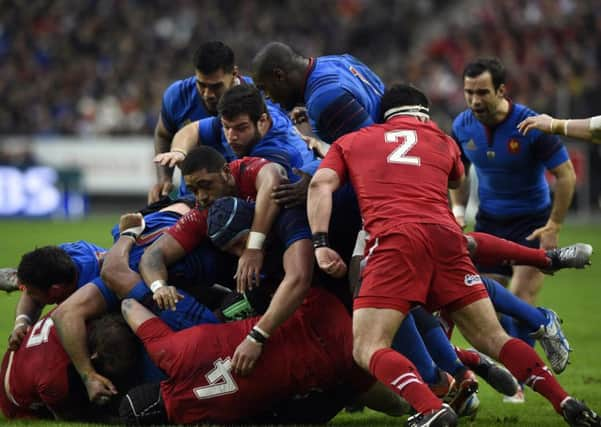Allan Massie: Rugby must ban the big hitters


The reason for the eagerness is obvious. There were some terrific matches in the Guinness Pro 12 last season and, this being a year free of World Cup distractions, there will be more cracking games in the months to come.
The competition is intense – there are at least half-a-dozen clubs capable of winning the title, and all of them are committed to playing open and attractive rugby.
Advertisement
Hide AdAdvertisement
Hide AdThere are, however, two causes for anxiety, one narrow, one broad. The first is whether the Pro 12 clubs can compete effectively in Europe against their much richer English and French rivals.
None reached the Champions Cup quarter-finals last season. The move of Leone Nakarawa from Glasgow, where he still had a year left on his contract, to Racing92 shows just how money talks.
It is, however, the broad cause for anxiety that threatens the future of the game. It was highlighted this week in an interview on the BBC rugby website.
Shaun Longstaff, a New Zealander who won a dozen Scottish caps on the wing from 1998 to 2000, and is now an agent, expressed his fears that the ever-more urgent insistence on size and power is putting the future health of players at great risk and thus damaging the game itself.
He remarked that many players now take the field fitted by coaches with sensors “which measure the G-forces generated when players collide”.
There are, he said, “coaches who openly talk about the G-force on hits”. What is the consequence? “If you haven’t got the ball you shouldn’t be looking to think ‘there’s a dead ruck, so if I hit that really hard, my Gs are going to be really high’.”
For “certain directors of rugby” he said, “the main theme is violence at the breakdown”. Such violence can be very damaging, resulting in head injuries and concussions.
One might observe that the word “hit” doesn’t appear in the Laws of the game. Actually a great deal – most? – of what goes on at the breakdown is in breach of the Law – and goes unpunished.
Advertisement
Hide AdAdvertisement
Hide AdTake, for instance, Law 16.2 (b). It reads: “A player joining a ruck must bind on a team-mate or opponent, using the whole arm. The bind must either precede, or be simultaneous with, contact with any other part of the body of the player joining the ruck.”
Clear enough? A player is evidently in breach of the law if he charges into a ruck without binding “with the whole arm”. A penalty should be awarded against him. This law is flouted at every ruck and the wrong-doer is not penalised.
Law 16.5 (c) reads “If a player joins the ruck from the opposite side or in front of the hindmost team-mate, the player is offside”. Time and again we see players join the ruck in front of their hindmost team-mate, that they may hit an opponent and knock him backwards. They usually do so with impunity.
Or what about Law 15.7 (d)? Law 15 relates to the tackle. This sub-section states: “Players on their feet must not charge or obstruct an opponent who is not near the ball.” We see this permitted – therefore unpunished – time and again in every match, players being “taken out” as they attempt to join a ruck or compete at the tackle point.
Longstaff is right to deplore the encouragement of “hits”. This is in part a consequence of the emphasis on size and strength. But it is encouraged by the reluctance of referees actually to apply the Laws of the game.
One understands, of course, that they are keen to keep the play flowing, and that this is in the interest of spectators. Nevertheless, if they made it clear that transgression of the laws I have quoted would be punished according to the Law, then the game would be that bit less violent and the risk of serious injuries to some extent reduced.
It might be useful also to dampen coaches’ enthusiasm for big hits by making it illegal for players to be fitted with these sensors which monitor the power of such hits.
Referees are now commendably quick to respond to tackles on a player jumping to catch the ball, but they are far less alert to what may be the greater danger of a big hit at the ruck or tackle point. Rugby is quite rightly a physical game, but it need not be an illegally violent one.
Advertisement
Hide AdAdvertisement
Hide AdA player who punches another will usually be punished. A player who delivers an illegal big hit will not be. For the good of the game punishment of such offences should be severe. I would suggest an automatic one-month suspension might bring an end to the practice.